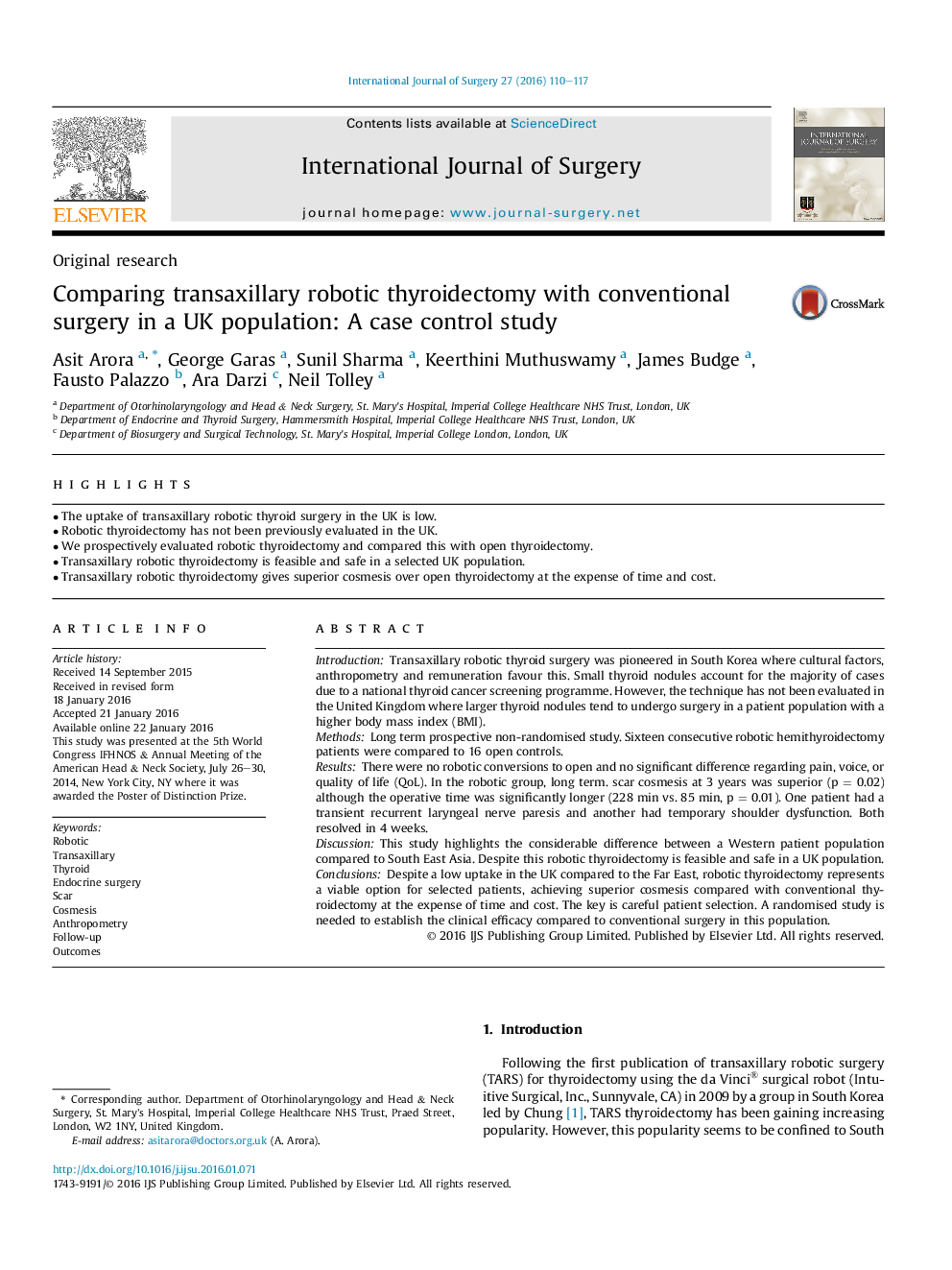| Article ID | Journal | Published Year | Pages | File Type |
|---|---|---|---|---|
| 4285505 | International Journal of Surgery | 2016 | 8 Pages |
•The uptake of transaxillary robotic thyroid surgery in the UK is low.•Robotic thyroidectomy has not been previously evaluated in the UK.•We prospectively evaluated robotic thyroidectomy and compared this with open thyroidectomy.•Transaxillary robotic thyroidectomy is feasible and safe in a selected UK population.•Transaxillary robotic thyroidectomy gives superior cosmesis over open thyroidectomy at the expense of time and cost.
IntroductionTransaxillary robotic thyroid surgery was pioneered in South Korea where cultural factors, anthropometry and remuneration favour this. Small thyroid nodules account for the majority of cases due to a national thyroid cancer screening programme. However, the technique has not been evaluated in the United Kingdom where larger thyroid nodules tend to undergo surgery in a patient population with a higher body mass index (BMI).MethodsLong term prospective non-randomised study. Sixteen consecutive robotic hemithyroidectomy patients were compared to 16 open controls.ResultsThere were no robotic conversions to open and no significant difference regarding pain, voice, or quality of life (QoL). In the robotic group, long term. scar cosmesis at 3 years was superior (p = 0.02) although the operative time was significantly longer (228 min vs. 85 min, p = 0.01). One patient had a transient recurrent laryngeal nerve paresis and another had temporary shoulder dysfunction. Both resolved in 4 weeks.DiscussionThis study highlights the considerable difference between a Western patient population compared to South East Asia. Despite this robotic thyroidectomy is feasible and safe in a UK population.ConclusionsDespite a low uptake in the UK compared to the Far East, robotic thyroidectomy represents a viable option for selected patients, achieving superior cosmesis compared with conventional thyroidectomy at the expense of time and cost. The key is careful patient selection. A randomised study is needed to establish the clinical efficacy compared to conventional surgery in this population.
